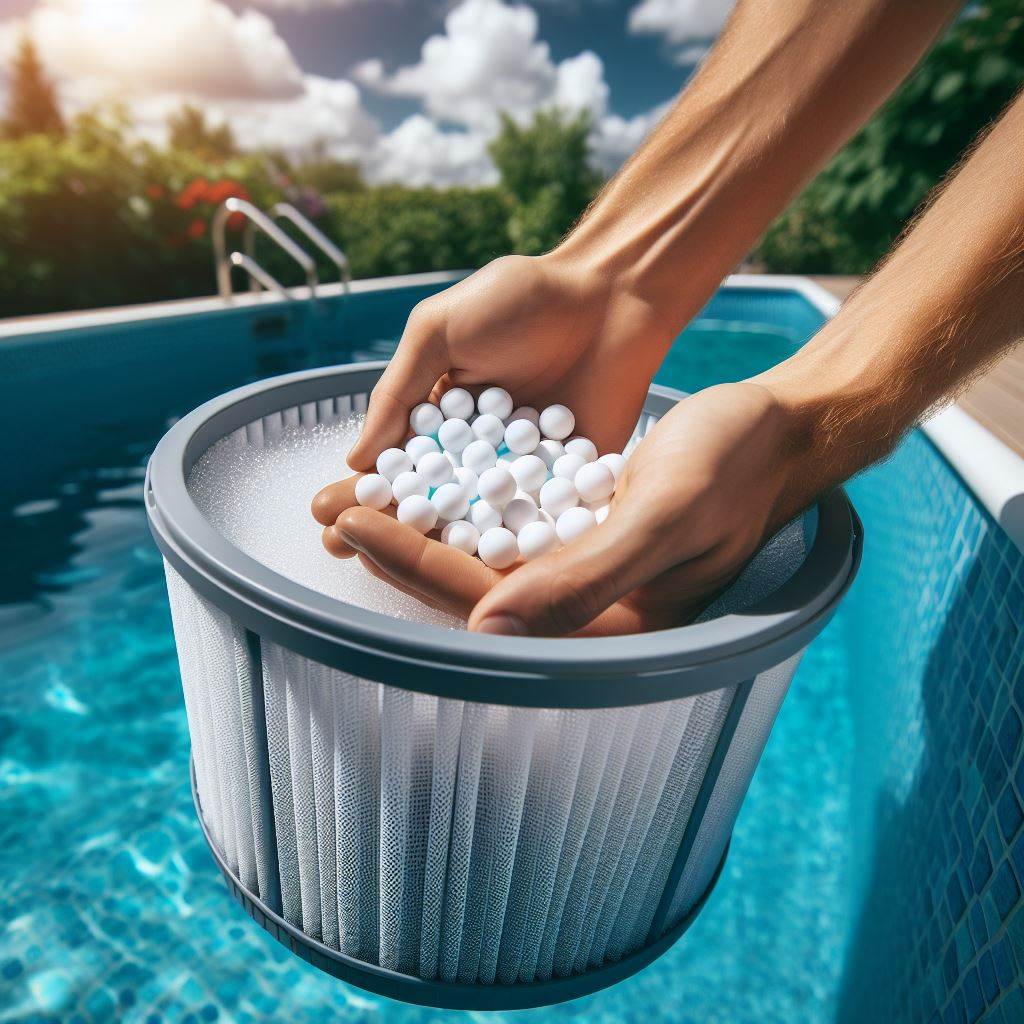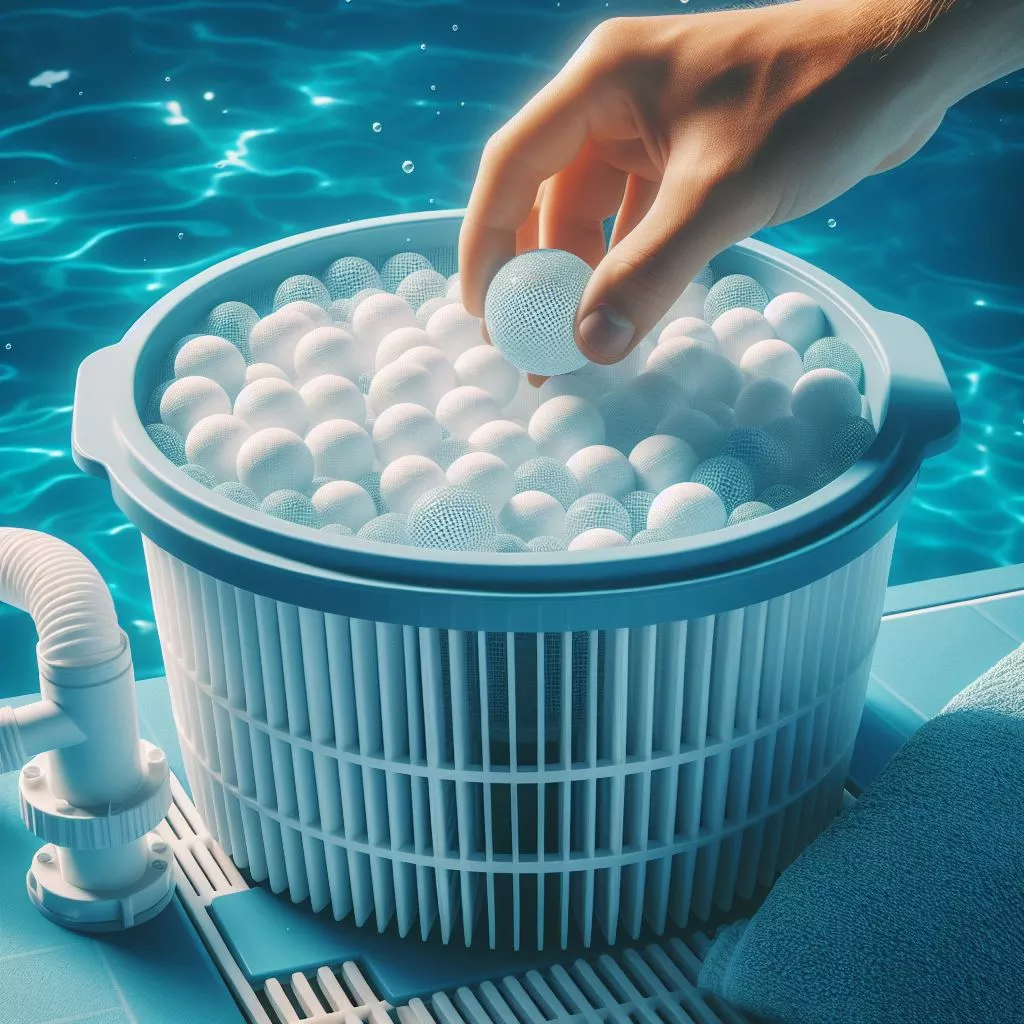In pool maintenance, using filter balls is an increasingly popular method. They can effectively filter impurities in the water and help resolve issues of cloudy pool water. However, for many pool owners, how to use filter balls in sand filter remains a question that needs answering. Today, we will delve into how to use filter balls to optimize your sand filter, ensuring clearer pool water.

What Are Filter Balls?
Filter balls are a new type of filter media, typically made from high-density fiber materials, offering higher filtration efficiency than traditional sand filters. Their main advantages include being lightweight, easy to operate and maintain, and providing significant filtration effects. Using filter balls can replace sand, enhancing the performance of your pool’s filtration system.
Working Principle of Filter Balls
Filter balls effectively capture tiny particles and impurities in the water through their fibrous structure. These fine fibers can absorb and trap particles smaller than those caught by traditional sand grains, thus maintaining cleaner water more efficiently. Additionally, the design of filter balls ensures that water flow through them does not cause blockages, maintaining smooth water flow.
How to Properly Use Filter Balls
Step 1: Empty the Sand Filter
Before using filter balls, first, empty the existing sand. Turn off the pool filtration system, open the top cover of the sand filter, and remove all the sand. This process may take some time and effort, but it is a necessary step to ensure the effective operation of the filter balls.
Step 2: Clean the Sand Filter
After emptying the sand, thoroughly clean the inside of the sand filter with clean water to ensure there are no residual sand particles or other impurities. After cleaning, make sure the filter is dry and free of water.
Step 3: Fill with Filter Balls
Determine how many filter balls are needed based on the size of the sand filter. A common rule of thumb is that 1 kilogram of filter balls can replace 75 kilograms of sand. Therefore, the answer to how many filter balls do I need depends on the weight of the sand you originally used. Pour the appropriate amount of filter balls evenly into the sand filter, ensuring it is filled to the proper height.
Step 4: Restart the Filtration System
After filling with filter balls, close the sand filter cover and start the pool filtration system. Observe the water flow to ensure there are no leaks or other abnormalities. The filter balls should work normally and begin filtering the pool water.
Solving Cloudy Water Issues
One of the main reasons pool owners use filter balls is to resolve cloudy water issues. Pool filter balls cloudy water is a common concern. With their high filtration capacity, filter balls can quickly capture suspended particles and fine impurities in the water, effectively resolving cloudy water issues.
Tips for Preventing Cloudy Water
- Regularly Check and Clean Filter Balls: Although filter balls are easier to maintain than traditional sand, regular checks and cleaning are necessary to maintain their filtration efficiency.
- Avoid Overuse of Pool Chemicals: Excessive use of chemicals can lead to cloudy water, so follow instructions and add them appropriately.
- Maintain Proper Water Circulation: Ensure smooth water flow in the pool and avoid dead zones, which helps keep the water clean.
Maintenance and Replacement of Filter Balls
Maintaining filter balls is relatively simple but still needs to be done regularly.
Cleaning Filter Balls
After a period of use, filter balls will accumulate impurities, affecting their filtration efficiency. Every few months, remove the filter balls from the sand filter and rinse them with clean water to remove attached impurities.
Replacing Filter Balls
Although filter balls have a longer lifespan, they are not permanent. Generally, the lifespan of filter balls is 2-3 years. When you notice a significant decline in their filtration efficiency or cannot restore it through cleaning, it’s time to replace them with new filter balls.
Frequently Asked Questions
How to Determine the Number of Filter Balls?
The answer to how many filter balls do I need depends on the weight of the sand originally used in your sand filter. 1 kilogram of filter balls can replace 75 kilograms of sand, so calculate accordingly.
Can Filter Balls Solve All Water Quality Issues?
While filter balls have high filtration efficiency, they cannot solve all water quality issues. Problems like chemical contamination and algae growth still need to be addressed through other methods.
How Often Should Filter Balls Be Cleaned?
Based on usage frequency and pool water conditions, it is generally recommended to clean filter balls every 2-3 months to maintain their optimal filtration efficiency.
Through this introduction, we hope you have gained a deeper understanding of how to use filter balls in sand filter. As a new type of pool filtration media, filter balls offer many advantages over traditional sand. Proper use and maintenance of filter balls can effectively address pool filter balls cloudy water issues, ensuring clearer pool water. We hope this article helps you resolve any problems encountered when using filter balls. If you have any other questions, feel free to leave a comment, and we will do our best to answer them.

